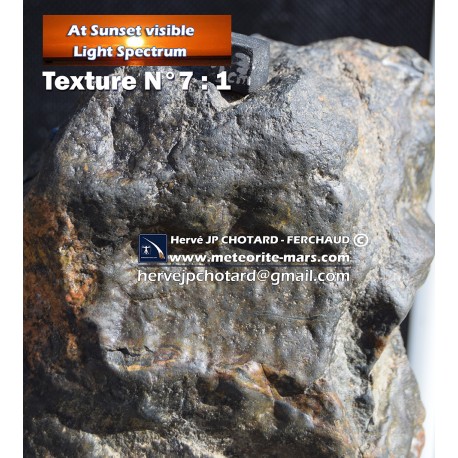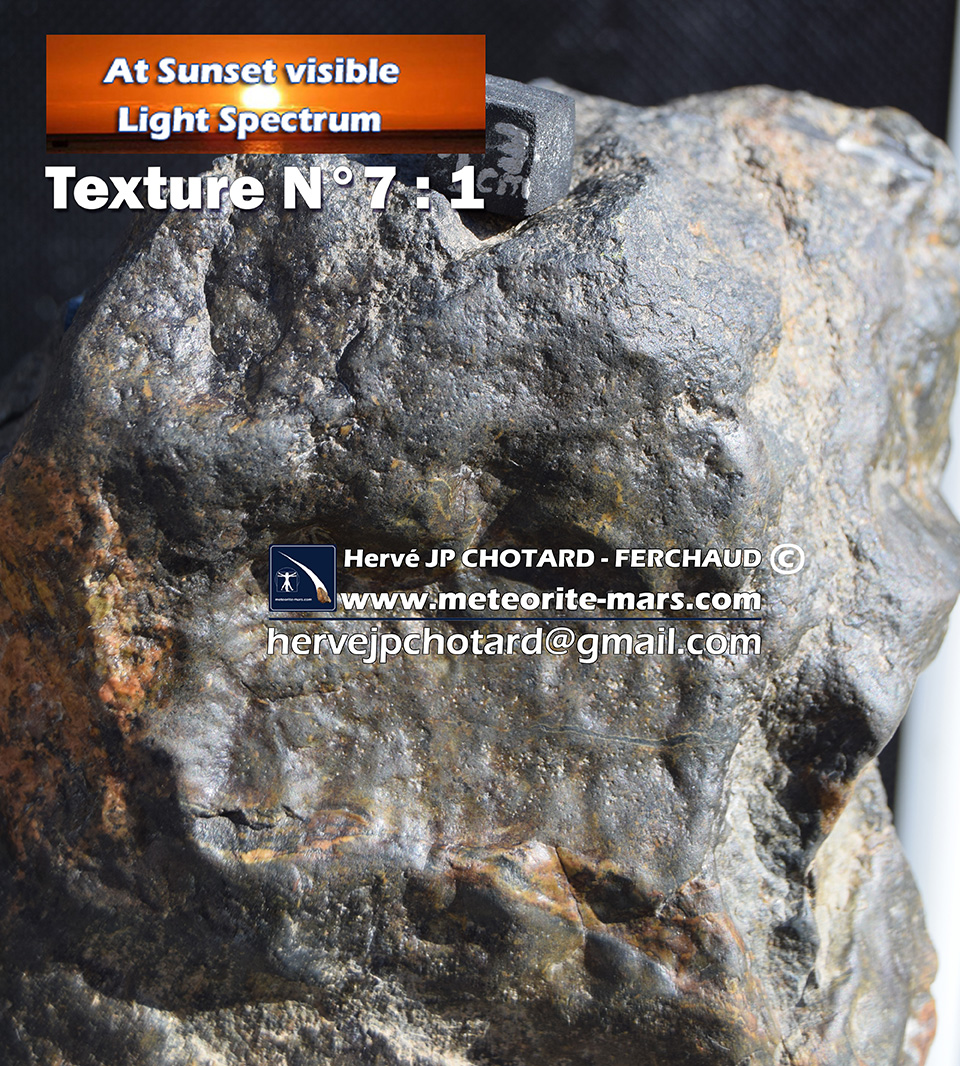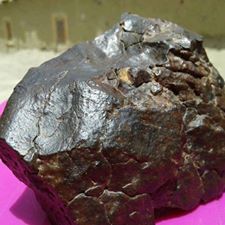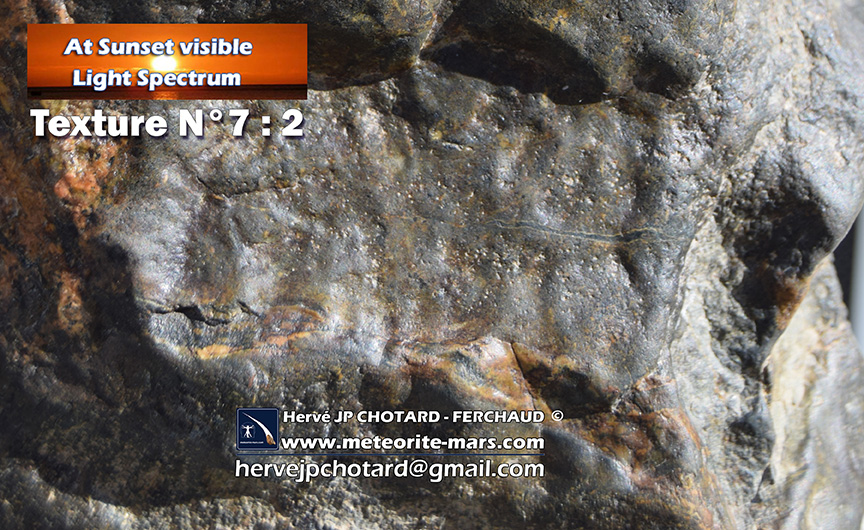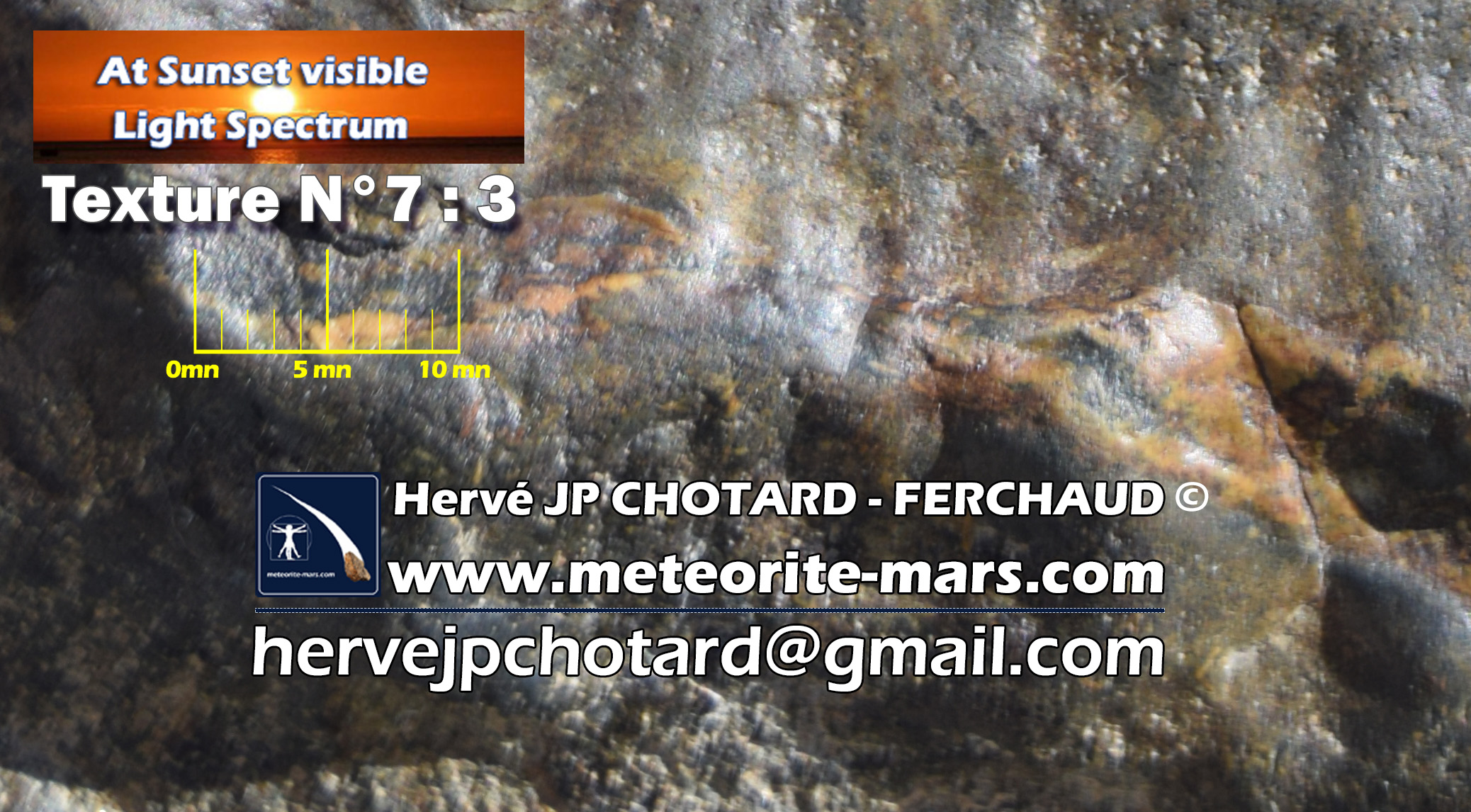Texture N°7 - Meteor Sky - Météore parcourt l'atmosphère terrestre
Texture00007
New product
Texture N°7 - Meteor Sky - Météore parcourt l'atmosphère terrestre
More info
Meteor Sky As a meteor travels through the Earth's atmosphere, the heat generated ablates material away.If the meteor is able to achieve stable flight rather than tumbling sporadically, then the material will ablate in an even manner creating what is known as a shield or nose-cone shape. In fact, ideas for space re-entry vehicles were designed from this natural shape which tends to dissipate the high amounts of energy better.The leading side (front) and sides often have flow-lines in the surface which indicates the direction the material was being ablated.The rear edges of the trailing side can create a 'roll-over' rim or 'lip' where the ablating/melting material has started to roll-over onto the back sida meteor travels through the Earth's atmosphere, the heat generated ablates material away.If the meteor is able to achieve stable flight rather than tumbling sporadically, then the material will ablate in an even manner creating what is known as a shield or nose-cone shape. In fact, ideas for space re-entry vehicles were designed from this natural shape which tends to dissipate the high amounts of energy better.The leading side (front) and sides often have flow-lines in the surface which indicates the direction the material was being ablated.The rear edges of the trailing side can create a 'roll-over' rim or 'lip' where the ablating/melting material has started to roll-over onto the back side.Sometimes specimens will also have 'frothing' on the trailing side where the crust has literally bubbled. This is evident in the Gao-Guenie pieces below. Oriented meteorites are quite rare and can differ widely in shape and size but perfectly shaped specimens such as the 277g Australian Iron are extremely rare! | |
des lignes de flux dans la surface qui indique la direction de la matière a été ablatée. Les bords arrière de la face arrière peuvent créer un rebord « roll-over » ou « lèvres » où le matériau d'ablation / de fusion .Le côté d' attaque (avant) et les côtés ont souvent des lignes de flux dans la surface qui indique la direction de la matière a été ablatée. Les bords arrière de la face arrière peuvent créer un rebord « roll-over » ou « lèvres » où le matériau d' ablation / de fusion a commencé à renversement sur le côté arrière.Parfois , les spécimens seront également « faire mousser » sur le côté arrière où la croûte a littéralement barbotage. Cela est évident dans les pièces Gao-Guenie ci - dessous.Météorites orientés sont assez rares et peuvent être très différents dans la forme et la taille , mais des spécimens parfaitement en forme comme les 277 g de fer en Australie sont extrêmement rares!meteorite-mars.com
|
https://www.google.fr/search?q=lines+flux+crust+fusion+meteorite&rlz=1C1CHBF_frFR726FR726&tbm=isch&tbo=u&source=univ&sa=X&ved=0ahUKEwj82fb44s7TAhWHuRoKHTvMB7oQsAQIIg&biw=1050&bih=469#imgrc=4CKP6M0LxiVl5M: thank"s meteorite-mars.com |
des lignes de flux dans la surface qui indique la direction de la matière a été ablatée |

